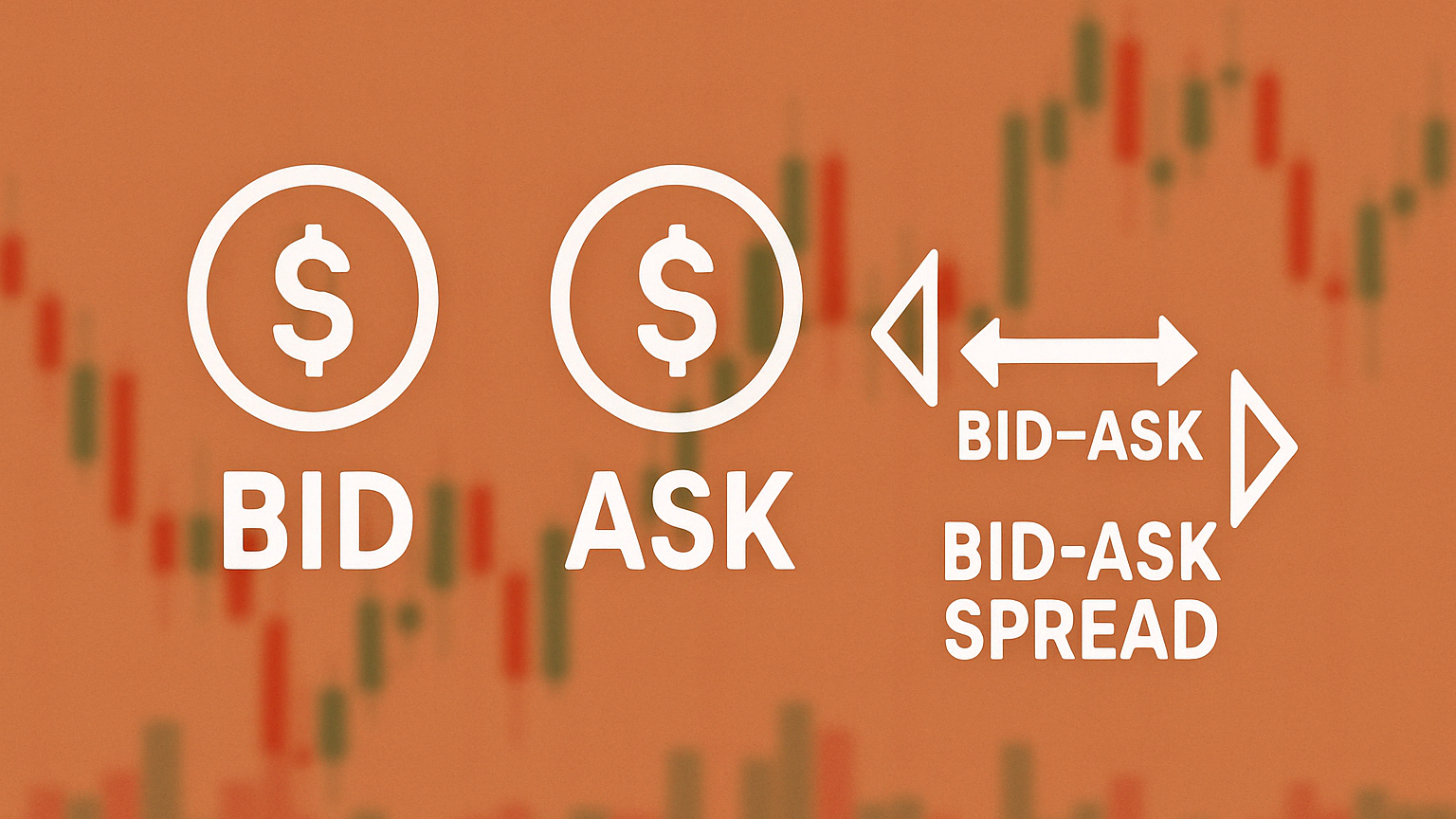Explore five effective ATR-based stop-loss strategies that help traders manage risk and adapt to market volatility.
Stop-loss strategies based on the Average True Range (ATR) help traders manage risk by adapting to market volatility. ATR measures how much an asset typically moves, allowing you to set stop-loss levels that align with current market conditions.
Here are 5 essential ATR-based strategies:
- Basic ATR Stop-Loss: Sets static stops using a simple formula (
Entry Price ± ATR × Multiplier). - ATR Trailing Stop: Dynamically adjusts as prices move in your favor to lock in gains.
- ATR Chandelier Exit: Uses price extremes to refine stop-loss placement in trending markets.
- ATR Percentage Stop: Combines ATR with percentage multipliers for proportional risk control.
- Market Volatility ATR Stop: Adjusts stop distances based on broader market volatility trends.
Why Use ATR Stop-Loss Strategies?
- Automatically adapts to volatility.
- Reduces emotional trading decisions.
- Protects capital while maximizing profit potential.
Quick Tip: Tools like LuxAlgo on TradingView simplify applying these strategies with visual aids and backtesting features.
Dive into the article for detailed formulas, examples, and tips to implement each strategy effectively.
1. Basic ATR Stop-Loss
The Basic ATR Stop-Loss method adjusts to market volatility with a straightforward formula:
- For long positions:
Stop Loss = Entry Price - (ATR * Multiplier) - For short positions:
Stop Loss = Entry Price + (ATR * Multiplier)
Typically, traders use a 14-day ATR as it offers a balanced view of market volatility. The multiplier (e.g., 1x, 2x, 3x) helps fine-tune stop-loss levels based on individual risk preferences. For example, if the 14-day ATR is $2 and you’re using a 2x multiplier, a long position opened at $100 would have a stop-loss set at $96.
This method is ideal for those wanting a simple way to align their stop-losses with market conditions. Tools like LuxAlgo make this even easier by providing visual representations of ATR levels and helping traders fine-tune their stop-loss placements.
To get the most out of this strategy, keep these tips in mind:
- Check ATR values daily to stay updated on volatility changes.
- Adjust your position size to maintain consistent risk.
- Use shorter ATR periods (e.g., 5-10 days) for more volatile markets or longer ones (e.g., 14-20 days) for trending markets.
While this is a reliable starting point, more advanced techniques like the ATR Trailing Stop can offer even better risk management options [1][3].
2. ATR Trailing Stop
The ATR Trailing Stop adjusts as prices move in your favor, helping to lock in gains while providing protection against market reversals. For long trades, the stop is placed at the highest price minus (ATR × multiplier). For short trades, it’s set at the lowest price plus (ATR × multiplier).
This builds on the straightforward approach of the Basic ATR Stop-Loss but adds a dynamic element to risk management. For example, if you enter a trade at $200, with an ATR of $5 and a multiplier of 3, the initial stop would be $185. As the price moves in your favor, the stop adjusts accordingly, maintaining the same ATR-based distance.
"The ATR trailing stop is a valuable tool that adapts to market conditions, giving traders the flexibility to protect profits while managing risk." - PineConnector Team [1]
Here’s how you can fine-tune this strategy:
- Shorter ATR periods (7-10 days): Useful for highly volatile markets.
- Longer ATR periods (14-21 days): Better suited for steady, trending markets.
- ATR and multiplier settings: Adjust these based on the market environment to optimize performance.
This approach works well for trend-following trades. Visualization tools like LuxAlgo can make it easier to monitor these trailing stops in real-time. Just remember to adjust your position sizes carefully, as stop distances are linked to market volatility.
While the ATR Trailing Stop is great for locking in profits during trends, the next method, the ATR Chandelier Exit, offers an even more precise way to manage risk [2][3].
3. ATR Chandelier Exit
The ATR Chandelier Exit builds upon the ATR Trailing Stop by factoring in price extremes for stop-loss calculations. It uses the highest highs and lowest lows to provide a more dynamic way to manage risk in volatile markets.
For long trades, the stop-loss is calculated as:
Highest High - (ATR × Multiplier)
For short trades, it’s:
Lowest Low + (ATR × Multiplier)
This approach is especially useful in markets with strong trends and high volatility. The stop-loss adjusts automatically as new price extremes occur, helping to maintain consistent risk management in changing market conditions.
Here’s how to make the most of the Chandelier Exit:
- Pick an appropriate period: A range of 14-21 days usually works for most markets.
- Set the multiplier carefully: A multiplier of 2-3x ATR provides a good balance between risk and reward.
- Keep an eye on volatility: In more volatile markets, you may need to increase the multiplier for better protection.
"The ATR Chandelier Exit strategy is designed to adjust the stop-loss level based on market volatility, which helps to avoid being stopped out by normal price fluctuations and capture larger price movements in trending markets."
This method removes emotional decision-making by using clear, rule-based stop adjustments. It helps you stay in profitable trades longer while reducing potential losses, thanks to its ability to adapt to market conditions.
For better results, consider using tools that allow you to visualize these stop levels in real time. Tools like LuxAlgo can help you track Chandelier Exit levels alongside other indicators, making it easier to identify exit signals.
While the Chandelier Exit shines in trending markets, the ATR Percentage Stop can provide a more adaptable option when market conditions vary [1][2].
4. ATR Percentage Stop
The ATR Percentage Stop uses market volatility and percentage-based adjustments to determine stop-loss levels, making it a practical tool for managing risk. This method calculates stop-loss distances by multiplying the Average True Range (ATR) by a percentage multiplier. For instance, if the 14-period ATR is 50 pips and the multiplier is set at 20%, the stop-loss distance would be 10 pips (50 × 0.2). So, for a long trade entered at 1.2000, the stop-loss would be placed at 1.1990.
"The ATR Percentage Stop is valuable for comparing the volatility of different securities, regardless of their price levels." - Oddmund Groette, Author [1]
How to Use the ATR Percentage Stop
-
Select the Right ATR Period
Match the ATR period to your trading style. Short-term traders might use a 5-day ATR, while swing traders often go for 14-21 days for smoother data. -
Set a Suitable Multiplier
Start with multipliers in the range of 20-30% of the ATR. This keeps the stop-loss wide enough to handle regular price swings without exposing you to excessive risk.
Tools like LuxAlgo can help visualize these stops alongside other indicators, simplifying risk management and highlighting potential exit points.
This approach stands out because it automatically adjusts stop-loss distances based on the volatility of each asset. This makes it especially useful for traders handling multiple assets or diverse portfolios, as it tailors risk management to the unique behavior of each instrument [2].
While the ATR Percentage Stop adapts well to changing market conditions, the Market Volatility ATR Stop takes it a step further by factoring in broader volatility trends.
5. Market Volatility ATR Stop
The Market Volatility ATR Stop adds a new layer to stop-loss strategies by factoring in overall market volatility trends. It's especially useful during times of major market changes or sudden shifts in volatility.
How It Works
This method adjusts the ATR (Average True Range) multiplier based on current market conditions. For quiet markets, traders might use tighter stops (1.5-2x ATR). In contrast, during volatile periods, they can widen stops (2.5-3x ATR). This approach helps avoid early exits while still managing risk effectively.
"This approach enhances trade reliability and risk management by adapting to volatility shifts." - Optimus Futures, LLC [1]
Key Steps to Follow
- Track ATR Values: Keep an eye on the ATR indicator to spot changes in market volatility.
- Adjust Multipliers: Use a higher multiplier when volatility spikes and a lower one during calmer periods.
- Update Stops Regularly: Recalculate stop-loss levels daily based on the latest ATR data.
Tools like LuxAlgo’s indicators can simplify this process by visually integrating dynamic stop levels with other technical analysis tools, helping traders make timely adjustments.
This strategy is particularly effective in forex and cryptocurrency markets, where volatility can change rapidly. By incorporating these broader trends, the Market Volatility ATR Stop provides a strong framework for managing risk in unpredictable markets.
Conclusion
These five ATR strategies offer practical risk management tools for various market environments. The Basic ATR Stop-Loss provides a simple, volatility-based safety net, while the ATR Trailing Stop helps lock in profits as it adjusts dynamically. The ATR Chandelier Exit improves trend-following, the ATR Percentage Stop allows for proportional risk control, and the Market Volatility ATR Stop adjusts to shifts in market activity.
Together, these methods give traders tools to manage risk effectively while pursuing profitable opportunities. Each approach is designed to protect capital and support trade success.
Tips for Implementation: Use ATR periods of 14-20 days and adjust multipliers (2-3x) based on your risk tolerance. Regularly review your ATR settings to ensure they align with your trading style and current market conditions.
"The optimal ATR stop loss multiple strategy achieves an effective balance between trend tracking and risk control by dynamically adjusting the stop loss distance." - FMZQuant [1]
Tools like LuxAlgo can simplify the use of ATR-based stop-loss strategies by providing visualization and backtesting capabilities. However, success requires careful testing and tailoring to your trading approach. Often, the best results come from combining elements of multiple strategies while applying them consistently.
FAQs
Here are answers to some common questions about using ATR-based stop-loss strategies effectively.
What is the best ATR stop-loss setting?
ATR stop-loss settings usually fall between 2x and 3x the ATR value. For markets with more price swings, higher multipliers work better, while calmer markets may require lower multipliers. The ideal setting also depends on the asset - volatile stocks need different adjustments compared to more stable ones.
What is the best ATR period for a stop-loss?
Short-term traders often go with a 5-day ATR for quicker reactions to market changes. Swing traders might prefer 14-21 days for smoother, less reactive data. Wilder's original 7-day recommendation offers a middle ground. Keep in mind, lower multipliers can trigger frequent stop-outs, while higher ones may tolerate bigger price movements but carry more risk.
How do you calculate the ATR stop?
To calculate the ATR stop, use the highest of these three values: the current high minus the low, the high minus the previous close, or the low minus the previous close. For example, if your entry price is $128.60 and the ATR is 3.2, placing a stop-loss one ATR below the entry means setting it at $125.40.
"Using the Average True Range indicator (ATR) is a smart way to determine where your stop loss should be placed." - Markets.com
These answers highlight key points about ATR stop-loss strategies, offering practical guidance for managing risk.







